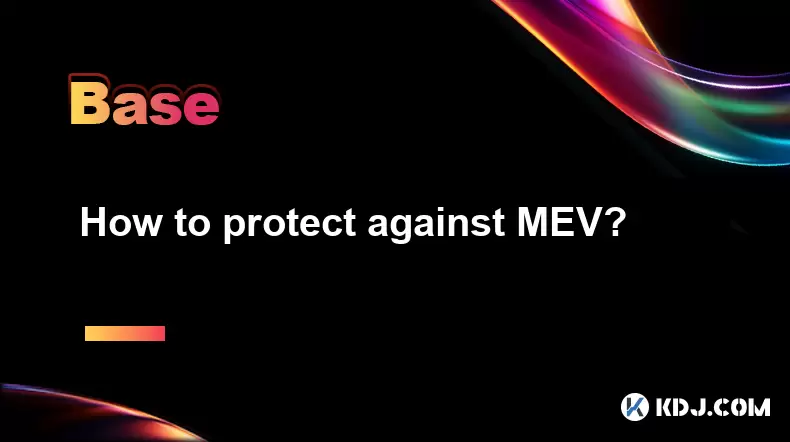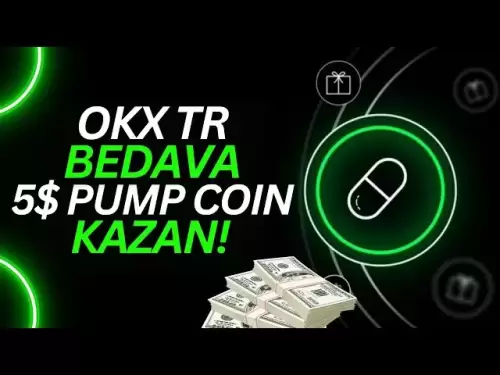-
 Bitcoin
Bitcoin $117400
-0.46% -
 Ethereum
Ethereum $3768
0.60% -
 XRP
XRP $3.551
2.09% -
 Tether USDt
Tether USDt $1.000
0.00% -
 Solana
Solana $203.2
11.30% -
 BNB
BNB $770.9
1.92% -
 USDC
USDC $0.9999
0.01% -
 Dogecoin
Dogecoin $0.2709
-0.02% -
 Cardano
Cardano $0.9024
4.49% -
 TRON
TRON $0.3139
0.60% -
 Hyperliquid
Hyperliquid $45.60
-1.41% -
 Stellar
Stellar $0.4730
-1.34% -
 Sui
Sui $4.025
2.15% -
 Chainlink
Chainlink $19.79
2.19% -
 Hedera
Hedera $0.2724
-2.39% -
 Avalanche
Avalanche $25.93
3.05% -
 Bitcoin Cash
Bitcoin Cash $524.0
-1.83% -
 Shiba Inu
Shiba Inu $0.00001558
0.50% -
 Litecoin
Litecoin $116.7
-0.30% -
 UNUS SED LEO
UNUS SED LEO $8.996
0.00% -
 Toncoin
Toncoin $3.334
1.83% -
 Polkadot
Polkadot $4.506
0.34% -
 Uniswap
Uniswap $10.99
4.83% -
 Ethena USDe
Ethena USDe $1.001
0.03% -
 Pepe
Pepe $0.00001461
3.17% -
 Monero
Monero $320.3
-1.01% -
 Bitget Token
Bitget Token $4.935
0.36% -
 Dai
Dai $0.9998
0.00% -
 Aave
Aave $322.4
-1.25% -
 Bittensor
Bittensor $455.6
9.33%
How to protect against MEV?
MEV, or Maximal Extractable Value, allows block producers to profit by reordering transactions, impacting DeFi users through front-running and price manipulation.
Jul 21, 2025 at 02:15 pm

Understanding MEV in the Cryptocurrency Ecosystem
MEV, or Maximal Extractable Value, refers to the profit that block producers can extract by strategically reordering, inserting, or censoring transactions within a block. This phenomenon is particularly prominent in Ethereum and other EVM-compatible blockchains where decentralized finance (DeFi) applications are widespread.
In a typical DeFi environment, arbitrage bots and liquidation engines scan the mempool for profitable transaction opportunities. Miners or validators can capture this value by prioritizing specific transactions, leading to inequitable outcomes for regular users. This behavior introduces unfair advantages and can undermine the integrity of decentralized systems.
How MEV Affects Users and Protocols
Users interacting with decentralized exchanges (DEXs) or lending protocols are particularly vulnerable. For example, a large swap on Uniswap might trigger front-running bots, which execute similar trades ahead of the user, manipulating prices and increasing slippage.
Lending platforms are also affected, as liquidation bots can exploit timing windows to maximize profit at the expense of borrowers. Validators or miners who include these transactions can capture MEV directly, leading to centralization risks and economic inefficiencies.
Using MEV-Resistant Protocols and Tools
One of the most effective ways to mitigate MEV is by using MEV-resistant protocols designed to obscure transaction details before they hit the mempool. Examples include:
- Private mempools, such as those offered by Taichi Network or Flashbots, allow users to submit transactions directly to miners without exposing them to the public mempool.
- Order flow auctions, like SUSS, CowSwap, or Eden Network, enable users to auction their transaction order to MEV-optimized searchers while preserving privacy.
- Batching transactions through coordinator-based systems can reduce the predictability of transaction outcomes, making front-running less effective.
These tools ensure that transaction data remains hidden until the block is finalized, limiting the ability of MEV bots to extract value.
Choosing the Right Wallet and Transaction Settings
Your wallet provider and transaction settings can significantly influence your exposure to MEV. Consider the following:
- Use wallets that support private transaction relays, such as MetaMask Institutional or Blocknative’s SDK, which allow for direct communication with MEV-secure relays.
- Avoid using default gas settings. Instead, manually set gas prices to prevent predictable transaction timing.
- Monitor gas price fluctuations and use dynamic fee estimation tools to avoid being sandwiched between high-priority transactions.
By adjusting how and where you send transactions, you can minimize visibility in the public mempool and reduce exposure to MEV bots.
Participating in MEV-Aware Networks and Layer-2 Solutions
Layer-2 solutions and MEV-aware consensus mechanisms can also help reduce the impact of MEV. Consider the following:
- Optimistic Rollups and ZK-Rollups such as Arbitrum, Optimism, and zkSync reduce mempool visibility and transaction finality time, making MEV exploitation more difficult.
- MEV-Resistant Consensus Algorithms, such as those used in Celo or Avalanche, attempt to randomize validator selection and distribute MEV rewards fairly.
- Cross-chain bridges and atomic swaps can be used to avoid centralized arbitrage points where MEV is more predictable.
These strategies help users navigate the blockchain ecosystem with reduced exposure to value extraction by block producers or bot operators.
Engaging with MEV-Resistant DeFi Platforms
When interacting with DeFi protocols, choose platforms that are designed to minimize MEV risks:
- CowSwap uses batch auctions and off-chain solvers to protect users from front-running and sandwich attacks.
- DutchX employs a Dutch auction model, where prices decrease over time, reducing the predictability of arbitrage opportunities.
- Gnosis Protocol v2 allows users to submit orders off-chain, only revealing them at the end of a batch auction, preventing mempool visibility.
These platforms obscure transaction intent, delay execution, or bundle transactions, making it harder for MEV bots to exploit regular users.
Frequently Asked Questions
What is the difference between MEV and gas price manipulation?
MEV involves reordering, inserting, or censoring transactions to extract value, while gas price manipulation typically refers to bidding wars in congested blocks. MEV is strategic and intentional, whereas gas price issues are often accidental or situational.
Can MEV be completely eliminated from blockchain networks?
No, MEV is a fundamental economic incentive in blockchains that allow transaction reordering. However, it can be mitigated through protocol design, private transaction channels, and layer-2 solutions.
Are all DeFi users affected by MEV?
Most DeFi users are exposed to MEV, especially those interacting with DEXs, lending platforms, or engaging in large-volume trades. The extent of the impact varies based on network congestion, transaction size, and privacy measures used.
Is MEV always harmful to users?
While MEV often leads to negative outcomes like front-running, sandwich attacks, and price manipulation, some MEV activities, such as arbitrage, can help keep prices consistent across markets. The issue arises when users bear the cost without benefiting from the value extraction.
Disclaimer:info@kdj.com
The information provided is not trading advice. kdj.com does not assume any responsibility for any investments made based on the information provided in this article. Cryptocurrencies are highly volatile and it is highly recommended that you invest with caution after thorough research!
If you believe that the content used on this website infringes your copyright, please contact us immediately (info@kdj.com) and we will delete it promptly.
- MoonBull's Whitelist Mania: Your Last Shot at 100x Crypto Gains?
- 2025-07-22 10:30:12
- Meme Coins in 2025: Explosive Gains or Fading Fad?
- 2025-07-22 10:30:12
- Kim Keon-hee Crypto Probe: Scandal Rocks South Korea's Political Scene
- 2025-07-22 10:50:12
- ETH Holders in Profit: Value Surge Fuels Bullish Sentiment
- 2025-07-22 09:30:13
- NEAR Protocol's AI Leap: Double-Digit Gains and Future Potential
- 2025-07-22 09:30:13
- Cryptos, Meme Coins, Buy Now: Riding the Wave of Hype
- 2025-07-22 08:30:13
Related knowledge

What is the difference between CeFi and DeFi?
Jul 22,2025 at 12:28am
Understanding CeFi and DeFiIn the world of cryptocurrency, CeFi (Centralized Finance) and DeFi (Decentralized Finance) represent two distinct financia...

What is the difference between a sidechain and a Layer 2?
Jul 20,2025 at 11:35pm
Understanding the Concept of SidechainsA sidechain is a separate blockchain that runs parallel to the main blockchain, typically the mainnet of a cryp...

What is the Inter-Blockchain Communication Protocol (IBC)?
Jul 19,2025 at 10:43am
Understanding the Inter-Blockchain Communication Protocol (IBC)The Inter-Blockchain Communication Protocol (IBC) is a cross-chain communication protoc...

How does sharding improve scalability?
Jul 20,2025 at 01:21am
Understanding Sharding in BlockchainSharding is a database partitioning technique that is increasingly being adopted in blockchain technology to enhan...

What is the "crypto trilemma" of scalability, security, and decentralization?
Jul 19,2025 at 06:28pm
Understanding the Concept of the Crypto TrilemmaThe crypto trilemma refers to the challenge of simultaneously achieving scalability, security, and dec...

What is a cliff and vesting schedule in tokenomics?
Jul 20,2025 at 10:28am
What Does a Cliff Mean in Tokenomics?In tokenomics, a cliff refers to a specific period during which token holders are not allowed to access or transf...

What is the difference between CeFi and DeFi?
Jul 22,2025 at 12:28am
Understanding CeFi and DeFiIn the world of cryptocurrency, CeFi (Centralized Finance) and DeFi (Decentralized Finance) represent two distinct financia...

What is the difference between a sidechain and a Layer 2?
Jul 20,2025 at 11:35pm
Understanding the Concept of SidechainsA sidechain is a separate blockchain that runs parallel to the main blockchain, typically the mainnet of a cryp...

What is the Inter-Blockchain Communication Protocol (IBC)?
Jul 19,2025 at 10:43am
Understanding the Inter-Blockchain Communication Protocol (IBC)The Inter-Blockchain Communication Protocol (IBC) is a cross-chain communication protoc...

How does sharding improve scalability?
Jul 20,2025 at 01:21am
Understanding Sharding in BlockchainSharding is a database partitioning technique that is increasingly being adopted in blockchain technology to enhan...

What is the "crypto trilemma" of scalability, security, and decentralization?
Jul 19,2025 at 06:28pm
Understanding the Concept of the Crypto TrilemmaThe crypto trilemma refers to the challenge of simultaneously achieving scalability, security, and dec...

What is a cliff and vesting schedule in tokenomics?
Jul 20,2025 at 10:28am
What Does a Cliff Mean in Tokenomics?In tokenomics, a cliff refers to a specific period during which token holders are not allowed to access or transf...
See all articles

























































































